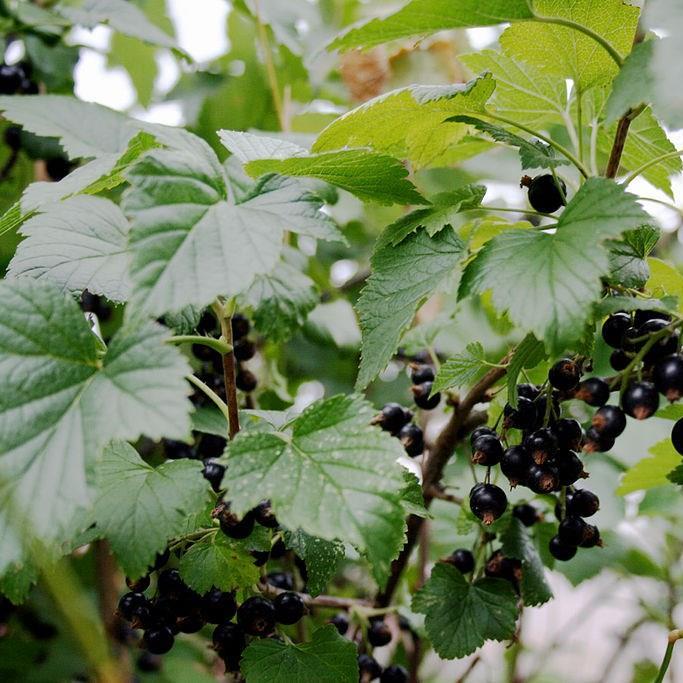
Ribes nigrum 'Ben Connan'
Blackcurrant 'Ben Connan'
Blackcurrant is a deciduous shrub that flowers in Spring & in Summer produces lots of dark black edible currants.. Long stems grow from the plant base, and each branch requires pruning after ageing to a few years old. Blackcurrants are self-fertile, which means you do not need to grow more than one bush in order for fruit to be produced.Blackcurrant 'Ben Connan' is a heavy cropping small bush variety which produces large fruits with a rich flavour. It is early cropping, from mid-summer, and continues to produce fruit over a long cropping period.
Contributed by @elainetant
-
Full sun
-
Occasional watering
-
Full Frost Hardy: 5F (-15°C)
-
Moist and free draining
Common name
Blackcurrant 'Ben Connan'
Latin name
Ribes nigrum 'Ben Connan'
type
Fruiting Plant
family
Grossulariaceae
ph
5.5 - 7.5 Acid - Neutral
Plant & bloom calendar
-
Best time to plant
-
When to harvest
full grown dimensions
 1.20 M
1.20 M
1.20 M
1.20 M
Ribes nigrum 'Ben Connan'
Blackcurrant is a deciduous shrub that flowers in Spring & in Summer produces lots of dark black edible currants.. Long stems grow from the plant base, and each branch requires pruning after ageing to a few years old. Blackcurrants are self-fertile, which means you do not need to grow more than one bush in order for fruit to be produced.Blackcurrant 'Ben Connan' is a heavy cropping small bush variety which produces large fruits with a rich flavour. It is early cropping, from mid-summer, and continues to produce fruit over a long cropping period.
Planting outdoors
From Early Autumn TO Late Autumn
Plant bare rooted plants asap after you receive in Autumn. Dig a hole twice the size of the spreaded roots, and mix well rotted compost with the soil, and plant the bush at the same depth, or a little lower. Firm in well, and mulch with compost.
Propagation by cuttings
From Mid Autumn TO Late Winter
Take hardwood cuttings of up to 3cm from this years growth, making a clean from above a shoot and remove any soft growth. Nearly fill a container with fine grit at the bottom, to enable free draining, and a suitable compost. Place the cutting, having dipped he end in a rooting compound first, with a third of the cutting showing.












